This document discusses the history and development of Philippine literature from pre-colonial times through the 21st century. It outlines the major periods of Philippine literary history: pre-colonial, Spanish, American, Japanese, and contemporary. The pre-colonial period included folk songs, speeches, tales, and epics told orally in various Philippine languages and dialects. During the Spanish period, literature was heavily influenced by Spanish language and Catholic traditions. The American period saw the rise of English language literature and imitation of Western styles and genres. The Japanese period saw a renewed focus on literature in Filipino languages. Contemporary Philippine literature continues to develop across languages and genres.











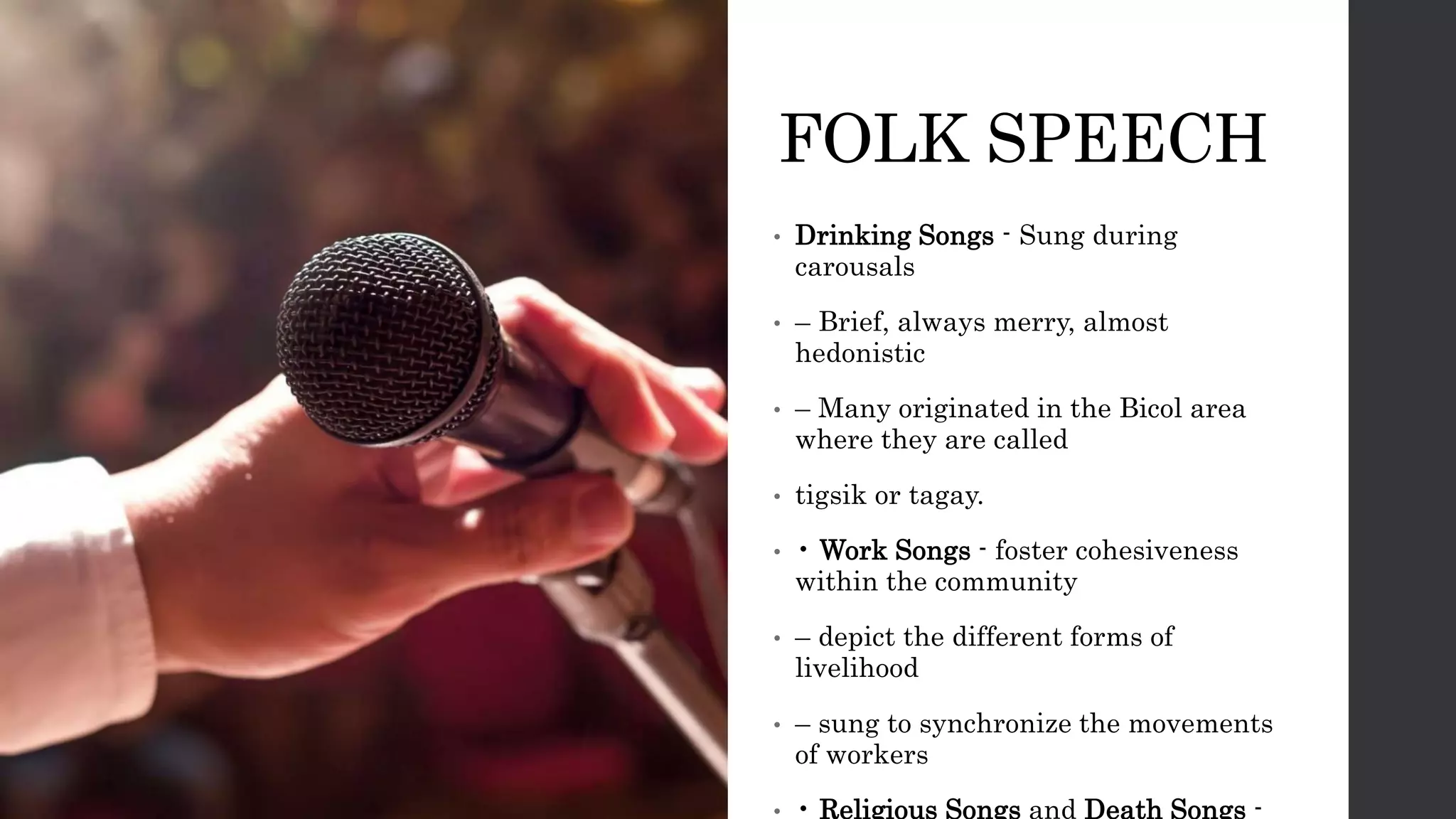



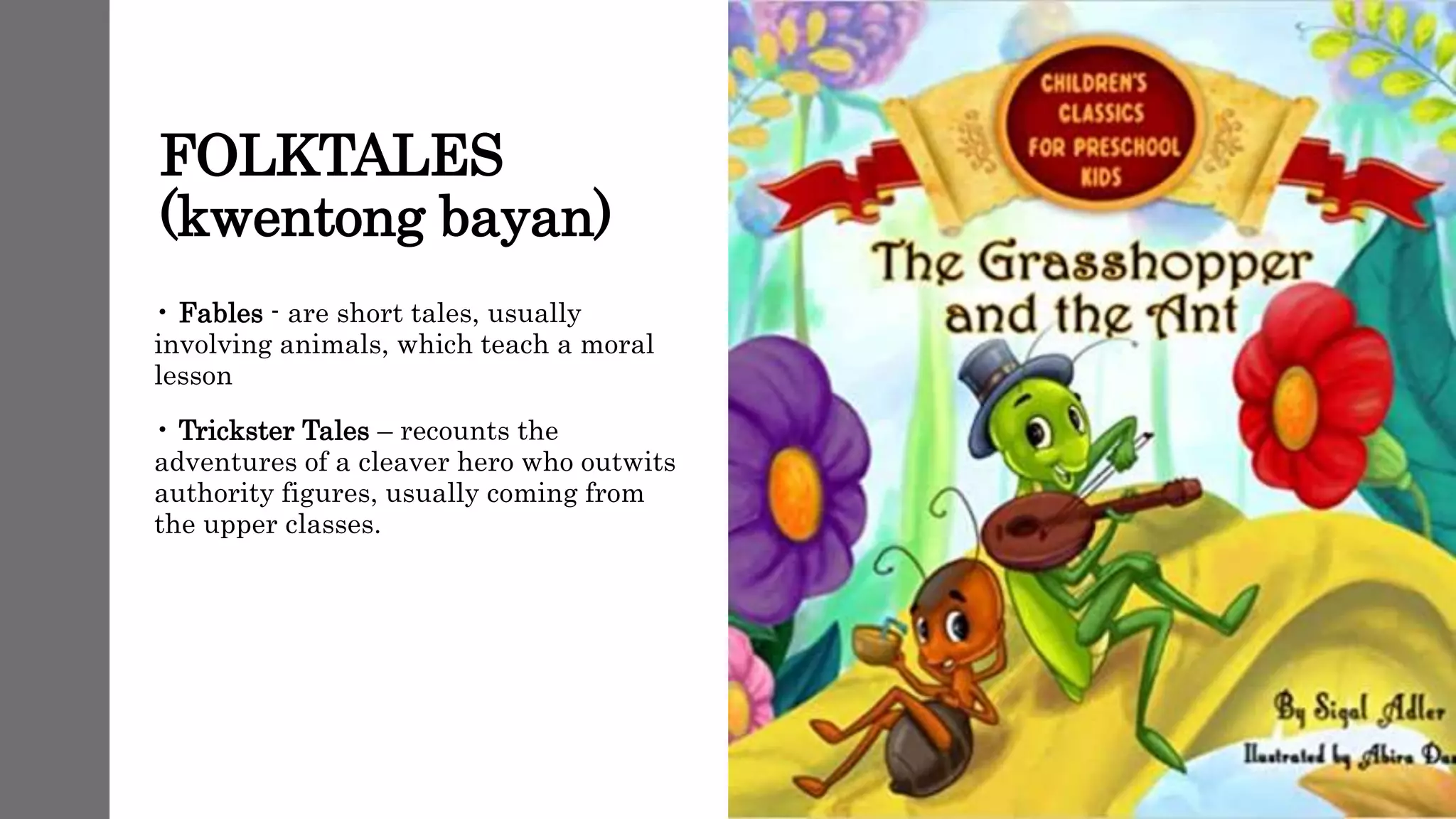




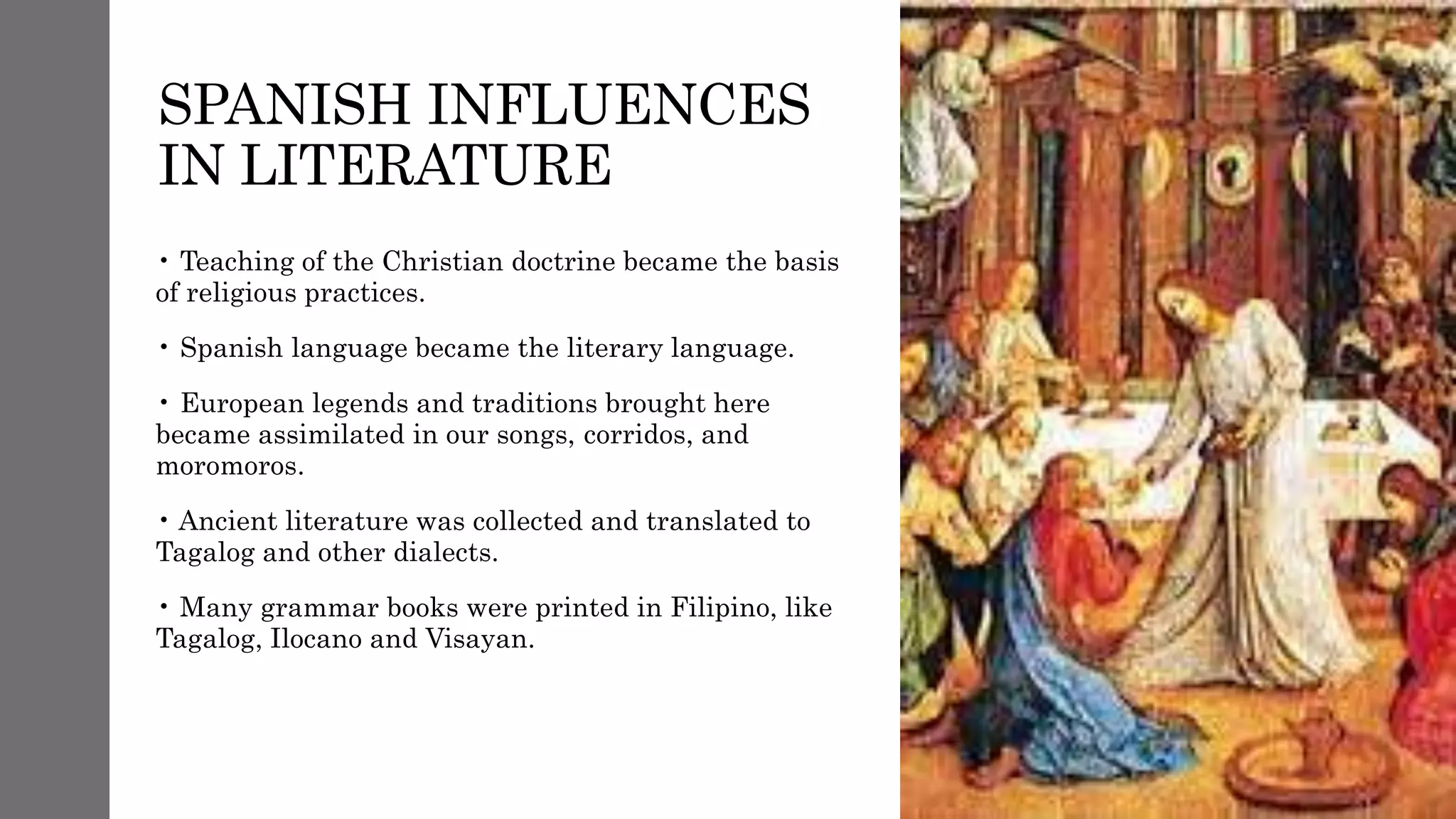


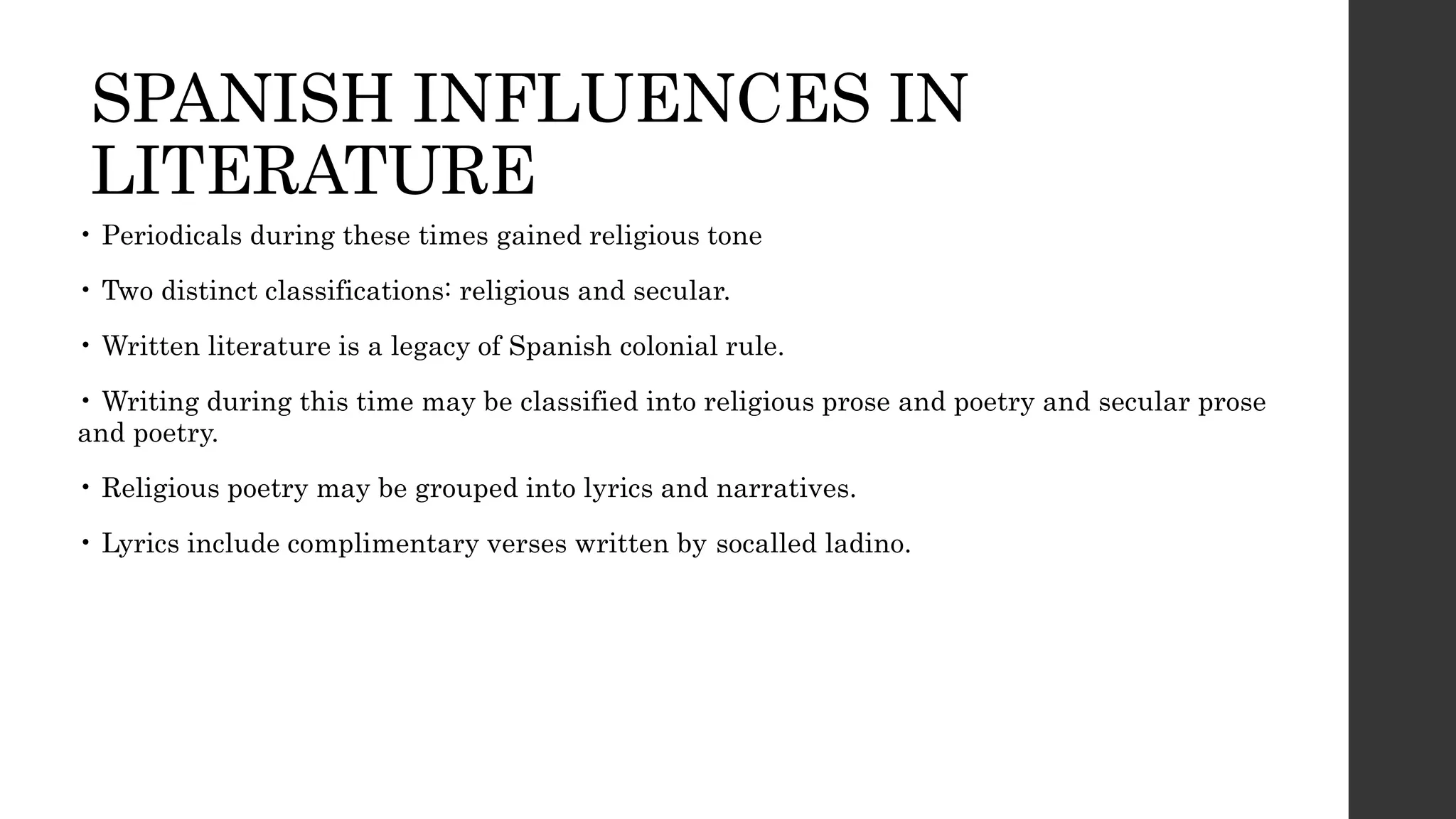


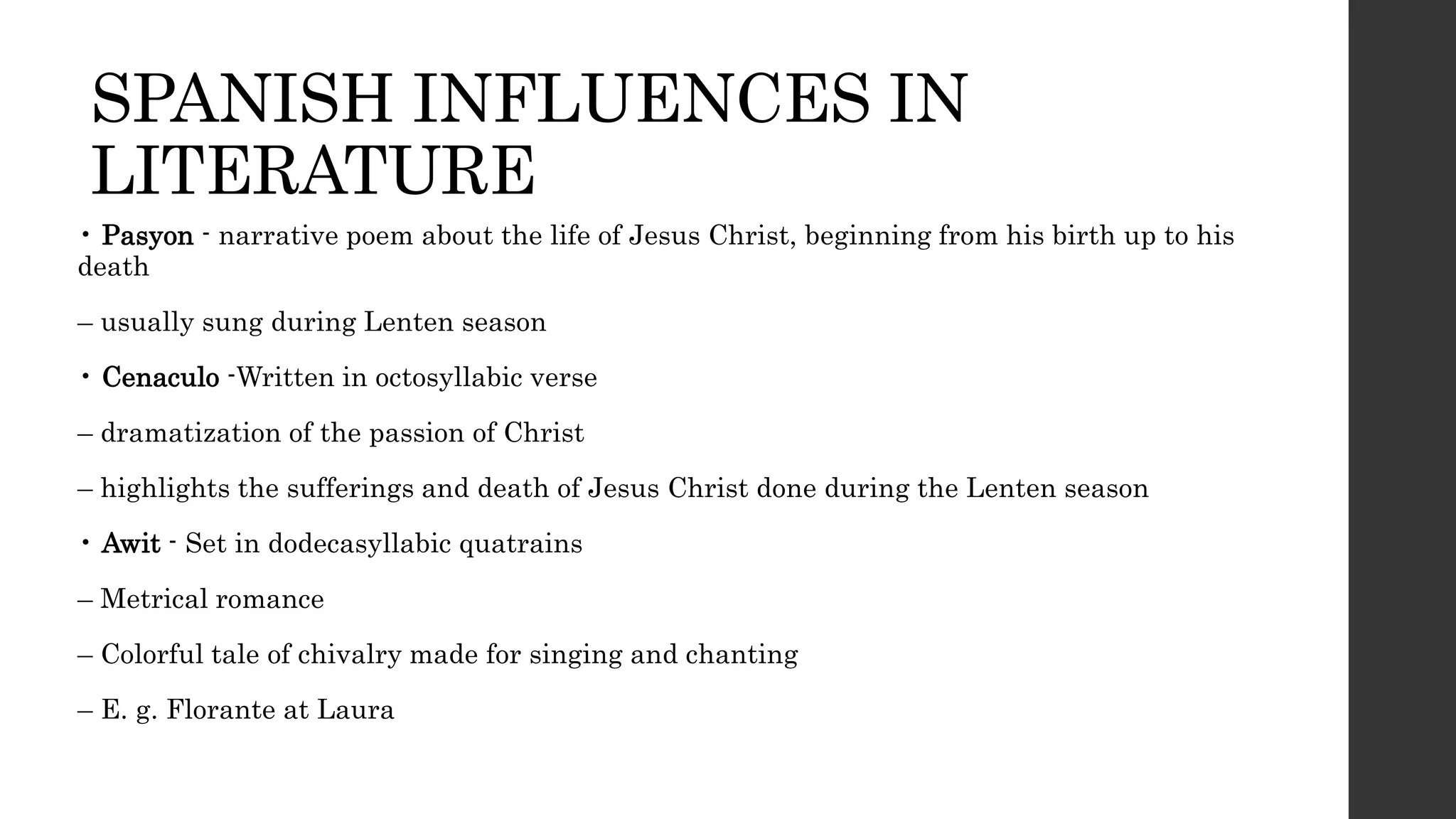

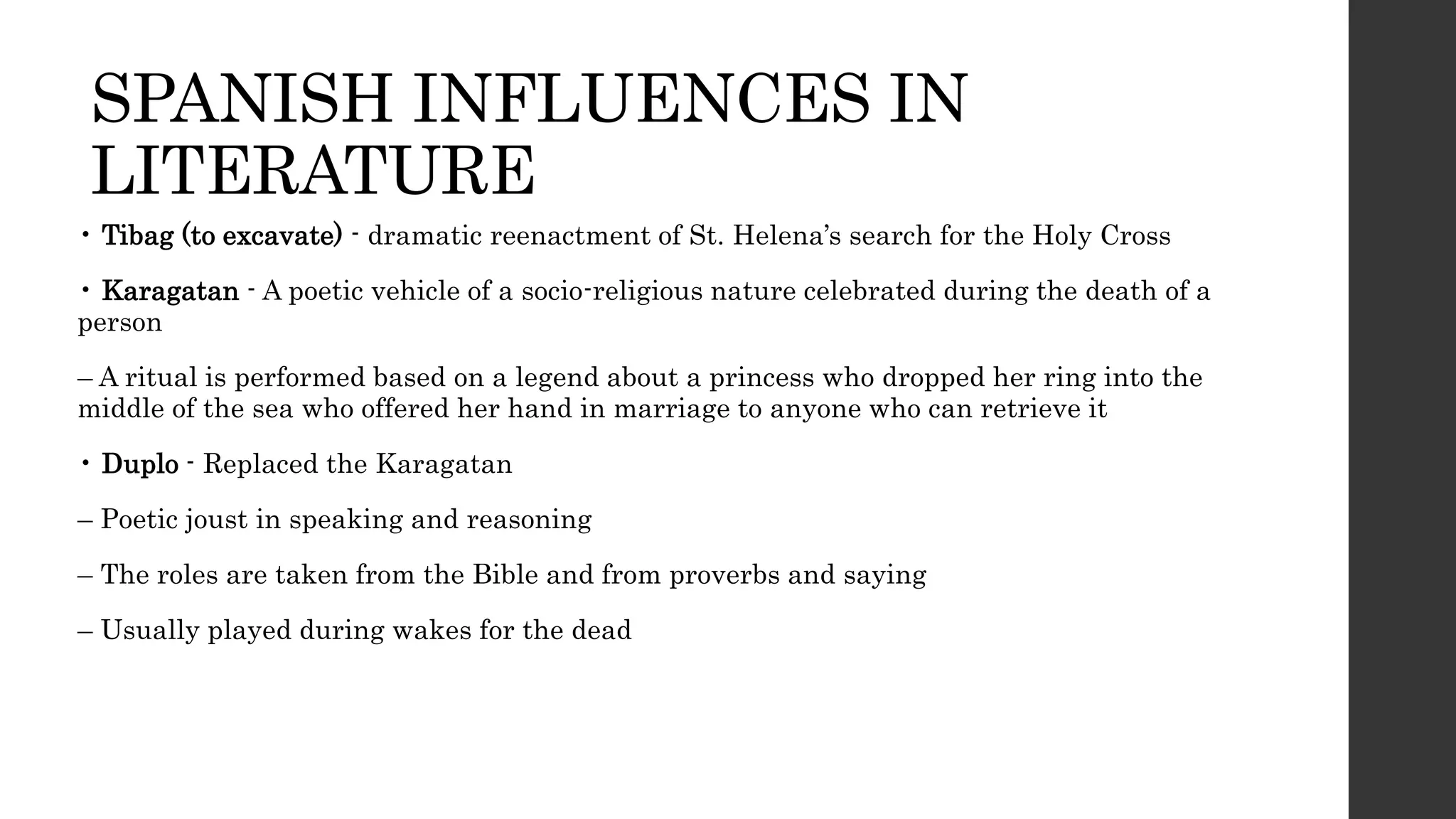












![JAPANESE PERIOD
• Philippine literature in English came to a halt
• This had an advantageous effect on Filipino Literature which experienced renewed attention
because writers in English turned to writing in Filipino.
• The common theme of poems was nationalism, country, love, life in barrios, faith, religion,
and the arts
• Three types of poem emerged: haiku (free verse with 17 syllables divided into 3 lines [5-7-5]),
tanaga (short but had measure and rhyme, 17 syllables), karaniwang anyo.
• Drama experienced a lull
• The field of the short story widened because many wrote short stories](https://image.slidesharecdn.com/week121stcentury-220911141926-907592f4/75/week-1-21st-century-pptx-42-2048.jpg)



